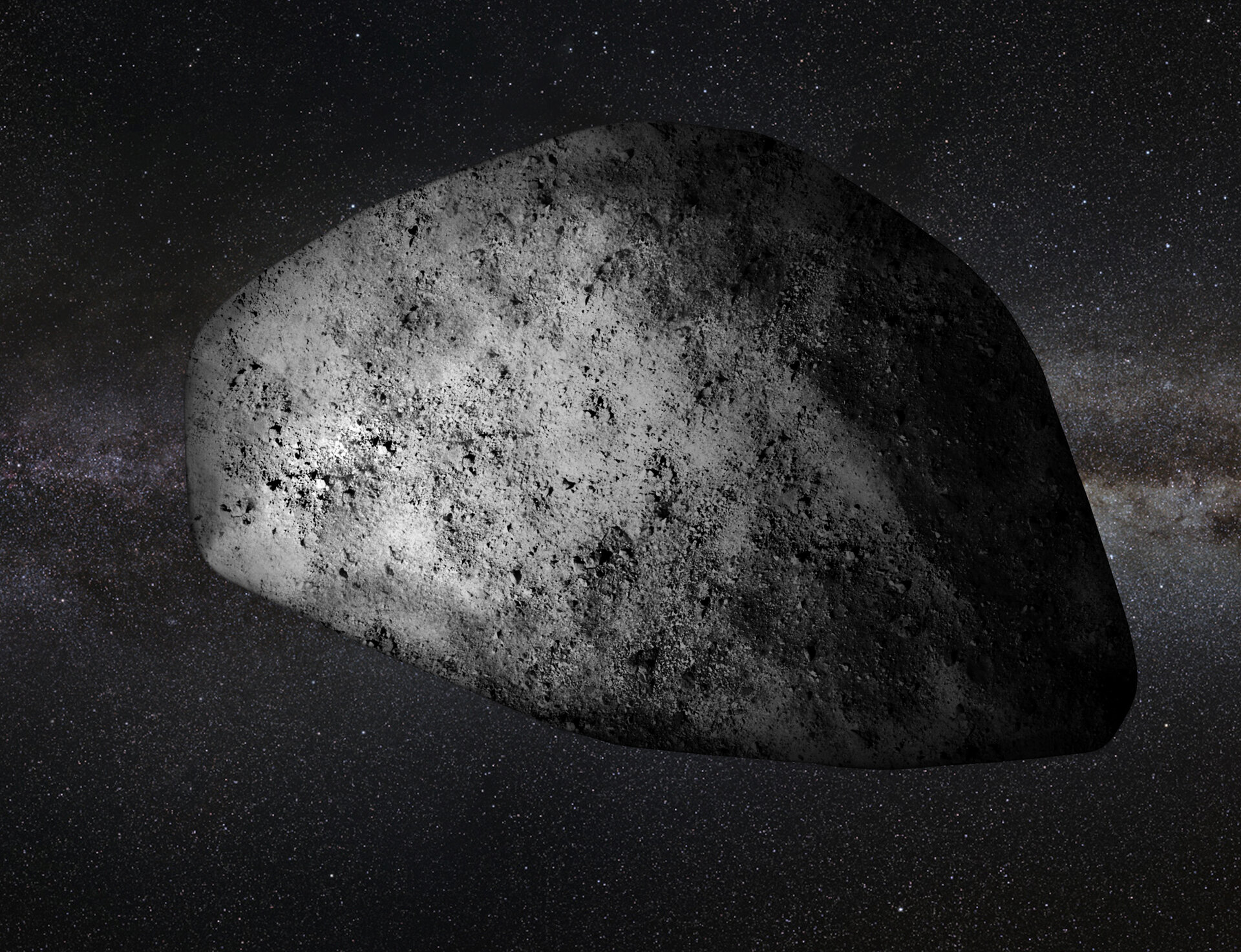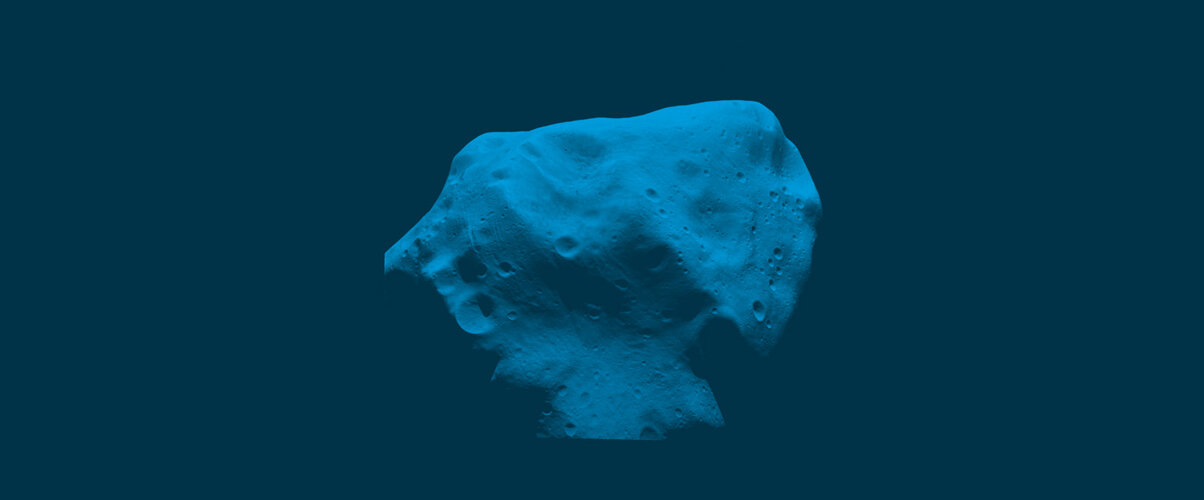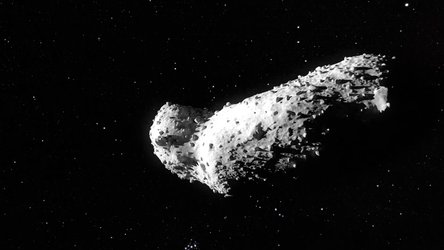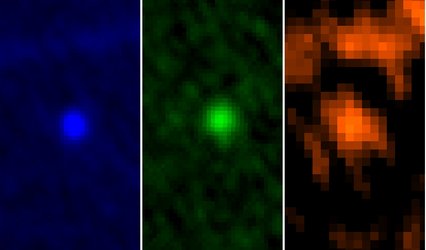Apophis
On 13 April 2029, the asteroid (99942) Apophis will pass less than 32 000 km from Earth’s surface.
Roughly 375 m across on average, Apophis will, for a short time, be closer to Earth than telecommunications satellites in geostationary orbit and visible in the night sky to the naked eye from much of Europe, Africa and Asia.
When Apophis was discovered in 2004, the initial observations indicated a small chance that it could impact Earth in 2029, 2036 or 2068. A collision could have been devastating, and so the asteroid was named after the Egyptian god of chaos and destruction.
Later observations ruled out any chance of impact for at least the next 100 years.
Nevertheless, the close approach of Apophis in 2029 represents a unique scientific and public outreach opportunity. Space agencies and scientific institutes around the world are planning to use the flyby to explore Apophis from the ground using telescopes and up-close using spacecraft.
Discovery and impact probability
Apophis was discovered on 19 June 2004 by astronomers at the Kitt Peak National Observatory in the USA. It was soon identified as one of the most potentially hazardous asteroids ever detected. The risk of an impact in 2029 rose as high as 2.7% and saw Apophis achieve the highest ever rating on the ‘Torino scale’ – a method used to evaluate the threat that an asteroid poses to Earth.
Using additional observations of the asteroid, astronomers were able to rule out the risk of an impact in 2029 or 2036. However, a small chance of impact in 2068 remained for a number of years.
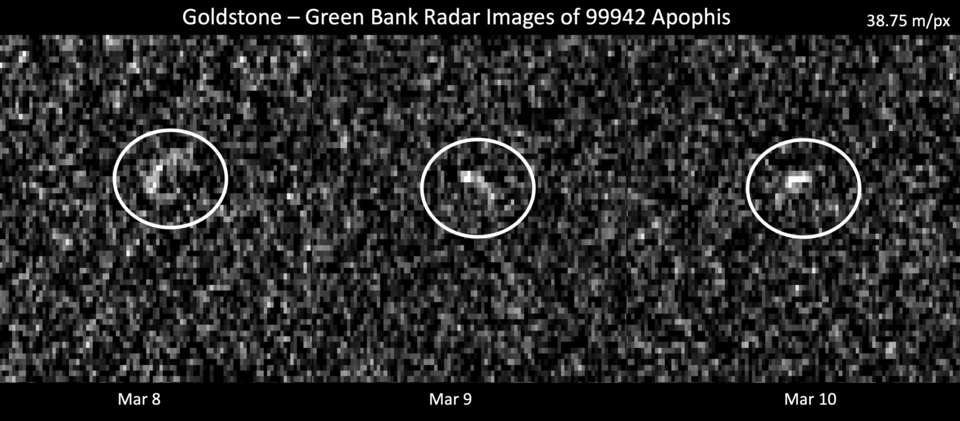
When Apophis passes Earth in April 2029, the pull of the planet’s gravity will significantly alter the asteroid’s orbit and amplify our uncertainty about its future trajectory. Using the data available at the time, astronomers believed that there was a chance that the flyby could alter the trajectory of Apophis in a way that would line it up for a collision with Earth in 2068.
However, radar observations of Apophis made by NASA’s Goldstone Deep Space Communications Complex in California and the Green Bank Observatory, West Virginia, in March 2021 greatly improved our knowledge of the asteroid’s current orbit and allowed astronomers to finally rule out any chance of Earth impact for at least 100 years.
Apophis was removed from the ‘Risk List’ maintained by ESA’s Planetary Defence Office on 26 March 2021.

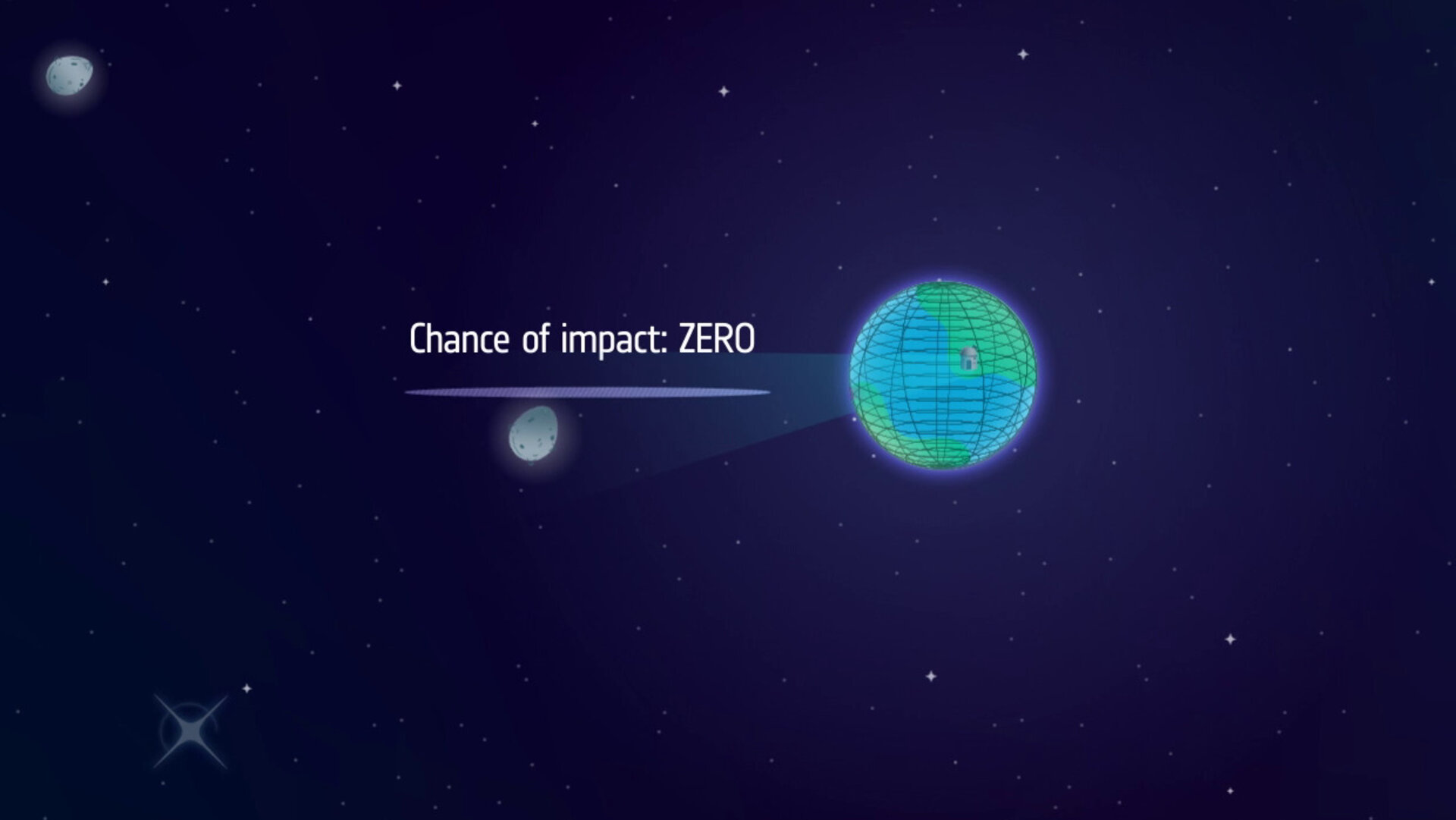
Access the video
2029 Earth flyby
On 13 April 2029, asteroid Apophis will come within 32 000 km of Earth’s surface. It will be the closest approach of an asteroid of this size that humankind has ever known about in advance.
During the approach, Apophis will be significantly affected by Earth’s mighty gravity. Strong tidal forces will squeeze and distort the asteroid as the side nearest Earth is pulled towards our planet more than the side farther away. This will alter its surface, perhaps triggering quakes and landslides, and the way it rotates.
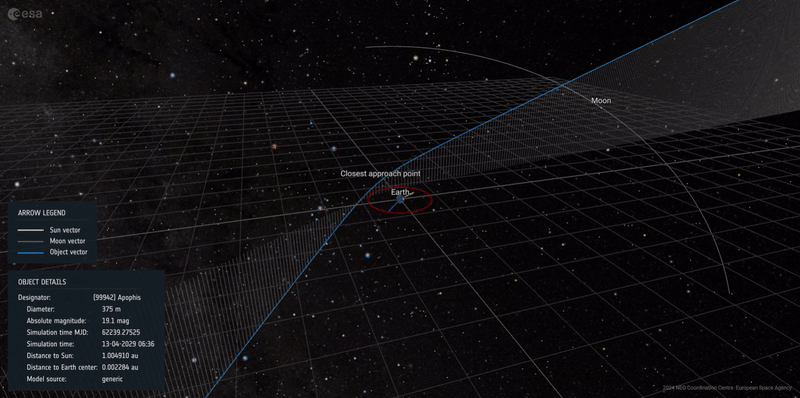
The encounter will also stretch the asteroid’s orbit around the Sun. Apophis is currently a member of the ‘Atens’ group of asteroids. The Atens cross Earth’s orbit and have orbits around the Sun that are smaller in total width than Earth’s.
As a result of its 2029 Earth flyby, the orbit of Apophis will be widened. As of April 2029, it will become a member of the ‘Apollo’ group, the family of asteroids that cross Earth’s orbit but which have orbits around the Sun that are wider than Earth’s.
Exploration
Apophis poses no risk to Earth during its 2029 flyby, but it offers a unique chance to study such a large asteroid up close and better prepare a response to any future asteroids that do.
ESA is considering multiple options for a spacecraft mission that would rendezvous with Apophis and explore the asteroid up close.
The Rapid Apophis Mission for Security and Safety (Ramses) would reuse a lot of the technology, teams and expertise developed for ESA’s Hera mission, which would minimise its development time and cost. Like Hera, Ramses would carry with it two CubeSats, which it would deploy once in orbit around Apophis, and which would carry an advanced suite of instruments of their own.
ESA is also considering the Satis mission, a smaller CubeSat mission that would rendezvous with Apophis and demonstrate miniaturised European technologies for asteroid exploration.
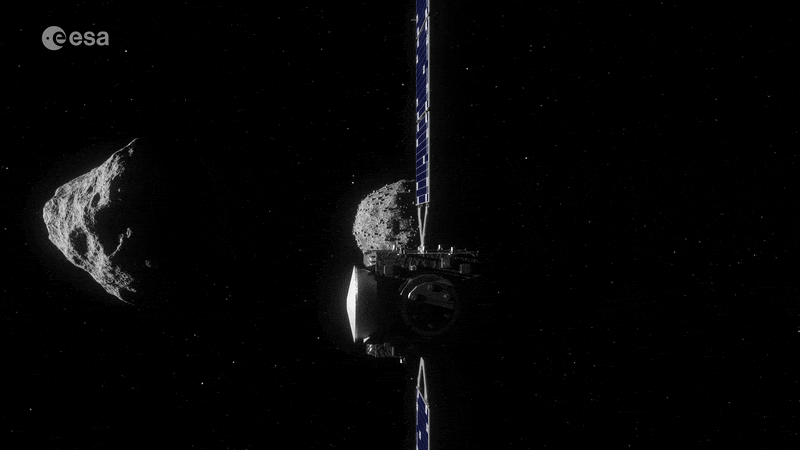
NASA, meanwhile, is repurposing an existing asteroid mission and redirecting it towards Apophis. OSIRIS-APEX (formerly the OSIRIS-Rex mission that collected samples from asteroid Bennu) will arrive at Apophis shortly after its close approach with Earth. OSIRIS-APEX will approach the surface of the asteroid and fire its engines to kick up loose rocks and dust and offer scientists a peek at the material just below the surface.
As OSIRIS-APEX will only arrive at Apophis after its closest point to Earth, it will not be able to obtain a complete before-and-after perspective on its own. Combining the observations of ESA’s mission, which would be at Apophis before and during the close approach, with those of NASA’s, which will explore the asteroid for months afterwards, would enable the global scientific and planetary defence communities to observe and study the changes to the asteroid as a result of the flyby in detail.
While Apophis poses no risk to Earth, preparing a spacecraft mission to intercept Apophis is good practice for a planetary defence response to a threatening asteroid. ESA chairs the international Space Mission Planning Advisory Group (SMPAG; pronounced ‘same page’) that serves as a forum for the world’s space agencies and coordinates any spacecraft-related response to such an asteroid.
Further spacecraft missions to Apophis are currently under consideration at other institutions around the world. The global Apophis exploration community will gather at ESA’s ESTEC facility in the Netherlands on 22—24 April 2024 for the workshop ‘Apophis T-5 Years: Knowledge Opportunity for the Science of Planetary Defense’.
Properties
| Name | (99942) Apophis |
| Discovery | 19 June 2004 by astronomers at Kitt Peak National Observatory |
| Shape and size | Irregular and elongated; approximately 375 m wide on average |
| Mass | Approximately 20 million tons |
| Formation and evolution |
Apophis formed in the main asteroid belt between Mars and Jupiter in the early days of our Solar System, roughly 4.6 billion years ago. Gravitational interactions with the planets, primarily Jupiter, over millions of years have altered the orbit of Apophis. It now crosses Earth’s orbital path and is therefore classified as a ‘near-Earth asteroid’. |
| Orbit around the Sun |
Before the 2029 Earth flyby: approximately 0.9 Earth years After the 2029 Earth flyby: approximately 1.2 Earth years |
| Group |
Before the 2029 Earth flyby: Aten After the 2029 Earth flyby: Apollo |
| Close approaches to Earth |
Before the 2029 Earth flyby: once every 7—8 years After the 2029 Earth flyby: irregular |
| Structure |
Stony-type (S-type) asteroid made up primarily of silicate materials with some metallic nickel and iron The structure, shape, density and surface of Apophis are likely similar to other S-type asteroids. We will learn much more about the asteroid around the time of the 2029 Earth flyby. |


